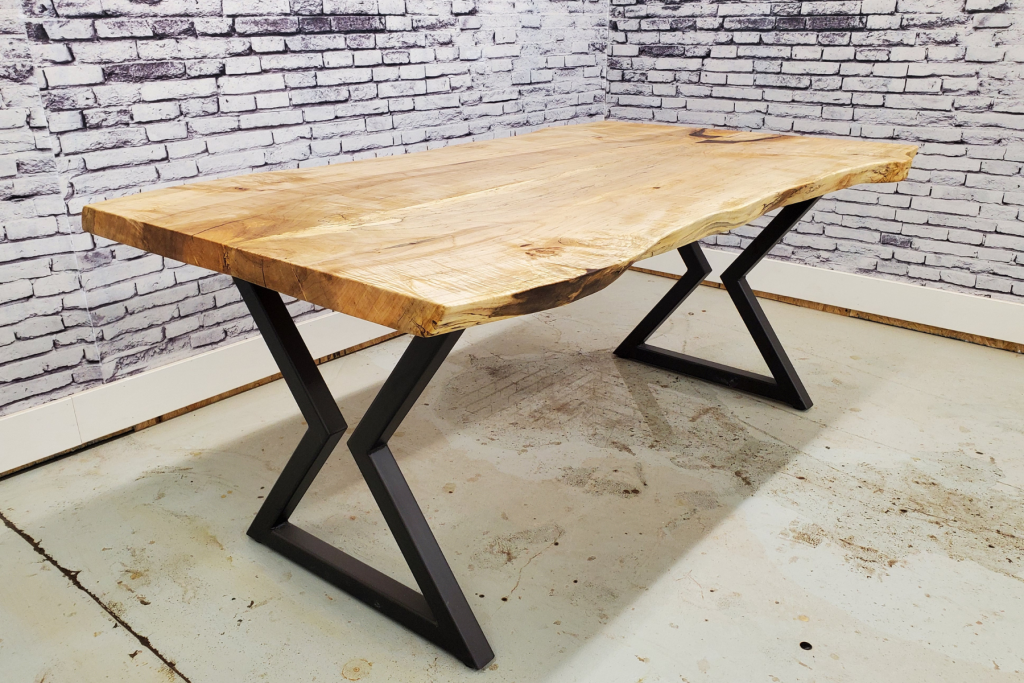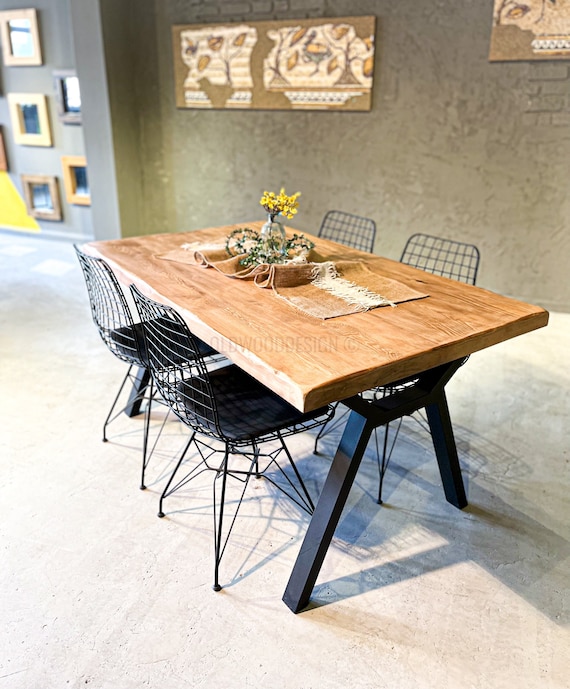Checking Out the Different Sorts Of Dining Table Legs Timber for Your Eating Room
The selection of dining table legs timber can profoundly impact both the aesthetic and practical high qualities of your dining area. Strong wood alternatives, such as oak and walnut, provide a traditional appearance with unmatched toughness, while crafted wood options use cutting-edge designs that resemble the splendor of all-natural grains. Additionally, the expanding fad of reclaimed timber introduces a sustainable element that attract ecologically conscious consumers. As we discover these various options, it ends up being important to consider not only the visual allure but likewise the practical effects of each product choice. What aspects should assist your choice?
Strong Wood Options

In addition, solid timber is renowned for its toughness and durability. Unlike crafted materials, solid timber is much less prone to bending and damages in time when properly kept. This makes it an excellent choice for families or those that regularly organize celebrations. Each item of solid timber is distinct, showcasing specific features that include in the beauty and personality of the dining table.
Additionally, strong wood can be finished in many ways, varying from natural oils to stained surfaces, enabling homeowners to customize their furnishings to match their decor. In summary, selecting strong timber for eating table legs not just makes sure structural stability yet likewise boosts the visual appeal of the eating area, making it a beneficial financial investment for any kind of home.
Engineered Timber Alternatives

Plywood, built from multiple layers of timber veneer, is specifically strong and stable, making it an exceptional selection for eating table legs. Its split make-up enables it to endure modifications in humidity and temperature better than typical strong wood. MDF, on the various other hand, uses a smooth surface area for painting or veneering, enabling developers to achieve a sleek appearance while preserving structural honesty.
Particleboard, commonly made use of in affordable options, provides decent stamina and is light-weight, making it much easier to manage. It may not be as long lasting as plywood or MDF. When choosing crafted wood alternatives, it is vital to take into consideration the intended use and preferred aesthetic. These products not just boost the performance of dining areas yet likewise enable higher layout adaptability, ensuring that typical and modern designs can exist side-by-side harmoniously.
Reclaimed Wood Includes
Reclaimed timber offers a special mix of sustainability and personality, making it a significantly prominent option for dining table legs. Sourced from old barns, factories, and other frameworks, recovered timber embodies a background that new materials just can not reproduce. Each item lugs its very own story, marked by distinct blemishes, knots, and differing grain patterns, which add to a table's distinct aesthetic appeal.
Along with its aesthetic beauty, recovered wood is an eco-friendly choice. By repurposing previously made use of materials, it decreases the need for brand-new lumber, hence aiding to lessen and conserve woodlands waste. This lines up with an expanding consumer preference for lasting methods in decor.
Additionally, reclaimed wood is often much more sturdy than recently gathered timber because of its age. The all-natural drying process that reclaimed wood undergoes outcomes in a denser and more powerful material, making it much less susceptible to bending and splitting. This enhances the longevity of dining tables, allowing them to withstand the roughness of everyday use.
Softwood vs. Hardwood
When selecting dining table legs, comprehending the differences between softwood and wood is crucial for accomplishing both visual and functional objectives. They generally exhibit a more rustic appearance, making them appropriate for country-style or laid-back dining areas.
On the various other hand, hardwoods, sourced from deciduous trees like oak, cherry, and maple, are renowned for their density, toughness, and resilience. The intricate grain patterns and rich hues of hardwoods give a innovative and timeless charm, making them ideal for formal dining settings. While woods often tend to be more pricey and much heavier, their durability versus deterioration commonly warrants the financial investment.
Inevitably, the selection in between softwood and hardwood for eating table legs should align with your layout vision, use demands, and budget plan, making sure that your eating space shows your personal design while remaining functional gradually.

Surfaces and Therapies
The aesthetic allure and long life of table legs can be substantially boosted with various coatings and treatments. These processes not only protect the timber from damage but also elevate its appearance, allowing it to click match diverse interior click here to read designs.
One usual therapy is staining, which permeates the wood and improves its all-natural grain while including shade. Spots give an abundant, elegant look, enabling property owners to match their furniture with existing style. On the other hand, clear coatings such as polyurethane or varnish create a protective layer without changing the wood's initial hue, making sure sturdiness versus wear and tear.
In addition, natural oils, like tung or linseed oil, nourish the wood and provide a refined sheen, all while being environment-friendly. These oils allow the surface area to breathe, stopping wetness buildup and potential bending.
For those looking for a rustic charm, weathered or distressed finishes can be put on create an aged look, adding personality to the piece. Inevitably, the selection of therapies and finishes depends on personal preference, wanted aesthetic appeals, and the specific timber type, making it vital to consider these aspects when choosing table legs for your area.
Final Thought
In verdict, the option of table leg materials significantly influences both the functional and visual elements of an eating area. Solid woods, my sources crafted alternatives, and reclaimed choices each deal distinct advantages, satisfying different preferences and requirements. Comprehending the differences in between softwoods and hardwoods, together with appropriate surfaces and treatments, enables for educated decision-making. Inevitably, the selection of wood kind ought to straighten with wanted style, longevity, and ecological considerations, boosting the total dining experience.
The option of dining table legs timber can exceptionally influence both the useful and visual qualities of your eating room - Dining Table Legs Wood. Solid timber choices, such as oak and walnut, supply a classic look with unmatched resilience, while engineered timber alternatives supply innovative designs that mimic the splendor of natural grains. Solid wood supplies an ageless high quality that can elevate the general layout of a dining space. Each item of strong timber is one-of-a-kind, showcasing specific characteristics that include to the charm and character of the dining table
Moreover, redeemed timber is frequently much more durable than freshly gathered timber due to its age.
Comments on “Produce Stunning Furniture with Elegant Dining Table Legs Wood Choices”